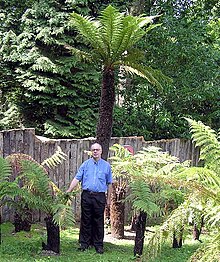- Fern plant generally consists of one or more fronds attached to a rhizome. A frond is simply the leaf of the fern.
- Rhizome is a specialized, root-like stem. In most temperate-zone species of ferns, the rhizome is subterranean and has true roots attached to it.
- Fronds are generally connected to the rhizome by a stalk, known technically as the stipe. The structures of the frond, rhizome, and stipe are important characteristics for species identification. The sizes of ferns and fronds vary Their Considerably Among the different species . Tree ferns of the family are the largest Cyatheaceae ferns . They are tropical plants Which can grow 18 m or more in height and Have fronds 5m or more in length.
Parts: Major parts of the FERN.
- The Frond is the man structure of the FERN.
- The Rhizome,the stem of the fern plant.
- The Pinnae or leaflets may be arranged alternately or in opposite pairs along the midrib.
- The Blade or lamina is the flat, green leafy blade of the frond.The Stipe section of stalk between the rhizome and the lamina.
- The Rachis The central midrib or stalk of the lamina. It is a continuation of the stipe.
Reproduction: The ferns don´t have pollen they have spores. reproductive structures called Sporangia
Fun facts:
- Ferns are very old organisms. They exist on the planet for nearly 400 million years.
- Fossil fuels (coal and natural oils) created during Carboniferous period are mostly made of ferns.
- Some species of ferns are used in human diet.
- Ferns can absorb heavy metals from the air and soil. They can be used to prevent pollution or for the cleaning of already polluted areas.
- Certain types of tree ferns are used as building materials.
- Lifespan of fern depends on the species. Some types of ferns can live up to 100 years.



No hay comentarios:
Publicar un comentario